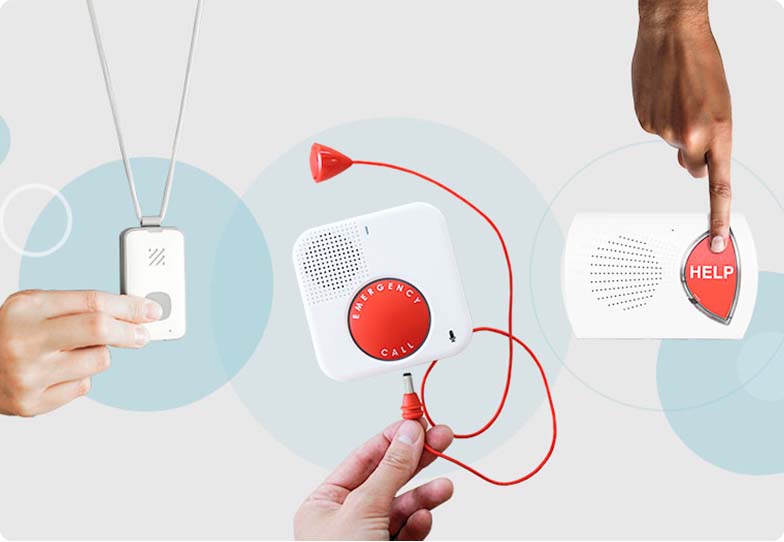Heating equipment, like fireplaces, is the leading cause of fires in homes.¹ You can reduce fire risk and keep your home safe with simple fire safety tips and a little upkeep.
Fireplace Safety
SafeWise experts have years of firsthand experience testing the products we recommend. Learn how we test and review.
Fire Prevention Week is October 8-14, 2023. This year’s theme is “Cooking safety starts with YOU. Pay attention to fire prevention™.”
Cooking is the leading cause of home fires in the U.S., with around 170,000 reported in 2021. To help keep your home and loved ones safe, we put together a list of tips with simple but vital actions you can take to stay safe in the kitchen.
Fireplace safety tips

Video: How to Make an Emergency Fire Escape Plan & 4 Ways To Prepare Now
Subscribe to our YouTube channel and learn how to protect your home, loved ones and, belongings.
Prevent creosote buildup

Creosote is a big cause of many fireplace fires. It’s a highly flammable byproduct of burning wood. It builds up on the inside of your chimney and can possibly ignite. A chimney fire can spread to your attic in just minutes.
To prevent creosote from going up in flames, make sure you follow these guidelines:
- Always use dry, seasoned wood. Green or wet wood produces more creosote. How can you tell if your wood is ready for the fireplace? Look for dark ends and cracks or splits in the wood.
- Have your fireplace cleaned and inspected once a year. The Chimney Safety Institute of America says that this is the best way to prevent a fireplace fire.² Before the weather gets cold, hire a professional to inspect and clean your chimney.
- Get enough air in your fire. Proper ventilation helps prevent creosote buildup. Keep the damper and fireplace doors open while using your fireplace. Keep the ash cleared out of your fireplace to increase airflow too.
To help you remember when to schedule fireplace cleanings, just ask Amazon Alexa or Google Assistant to set up a reminder.
Prevent burns
Fireplaces are pretty to look at, but they can create deadly burns. Teach children to stay away from them. Also, never leave children unattended when the fireplace is in use. Installing a safety screen can prevent little fingers from coming into contact with a hot fireplace glass door or coals too.
Cap it off

If your chimney flue doesn’t already have one, get a chimney flue cap installed. This will prevent animals and birds from getting inside and depositing flammable items in the chimney. You can get one for less than $100, and they aren’t too difficult to install yourself if you’re a DIYer.
Don’t forget accessories

Fireplace tools can be just as dangerous as a fire. Make sure the fireplace poker, matches, and lighters are put away safely so they don’t get into young, curious hands.
Some fireplace accessories you should always have nearby that can make your fireplace safer are a good fire extinguisher, a CO detector, and a smoke detector. Take a look at our top picks:
FAQ
You need a chimney inspection and cleaning at least once a year by a qualified chimney sweep.
Some good indications that your chimney needs cleaning:
- There’s a particularly stinky smell coming from the fireplace.
- You see a buildup of blackness or soot inside the fireplace.
- There’s more smoke than usual coming from the fireplace into your house.
Nope. Burning plastics and some paper can create noxious fumes that can make you sick. It can also start chimney fires.
Electric. Unlike wood fireplaces, you don’t need to worry about chimney fires or carbon monoxide poisoning with electric fireplaces. Make sure to keep flammable objects at least three feet away from the fireplace and ensure children have adult supervision around them, though.
If your fireplace isn’t your only source of heat, it’s best to put it out before bed. If you have to use your fireplace for heat, make sure it is properly maintained and keep any flammable materials at least three feet away.
Sources
- Richard Campbell, National Fire Protection Association, “Home Heating Fires PDF,” January 2021. Accessed September 28, 2023.
- Chimney Safety Institute of America, “The Facts About Chimney Fires.” Accessed September 28, 2023.
Amazon: *Product prices and availability are accurate as of post date and are subject to change. Any price and availability information displayed on Amazon at the time of purchase will apply to the purchase of this product. Safewise.com utilizes paid Amazon links.
Certain content that appears on this site comes from Amazon. This content is provided “as is” and is subject to change or removal at any time.
Google: Google, Google Nest Secure, [any other related Google Products] and other related marks are trademarks of Google LLC.
Recent Articles




